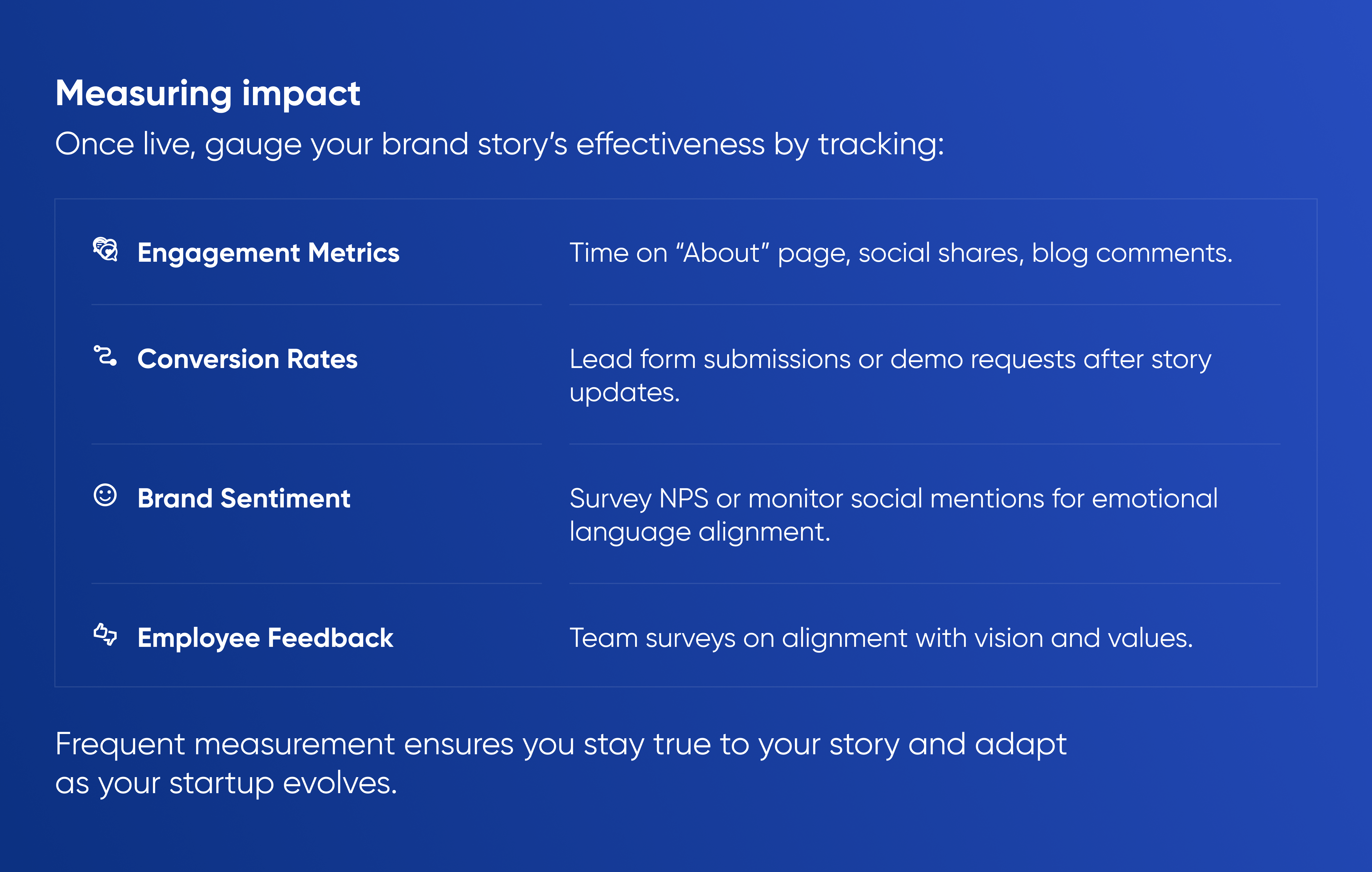Crafting a powerful brand story is one of the most effective ways to differentiate your startup, build trust, and inspire lasting loyalty. A well-told narrative goes beyond features or logos—it taps into emotions, values, and the “why” behind your product. In this guide, you’ll learn what makes a brand story compelling, see examples from successful companies, and follow a clear, step-by-step process to create your own narrative that resonates with decision-makers and end users alike.
What Is a Brand Story?
A brand story is the human narrative underpinning your company and offering. It conveys:
-
Purpose: Why your startup exists and the problem you’re passionate about solving
-
Origin: The circumstances or inspiration that led you to launch
-
Values: The guiding principles that shape your decisions and culture
-
Journey: Challenges you faced, breakthroughs you achieved, and lessons learned
-
Vision: Your aspirations for the future and impact you aim to make
When woven together, these elements create a coherent story that makes people feel connected. Rather than simply listing features, you invite your audience into a shared experience that aligns with their own goals and values.
Why a Strong Brand Story Matters
-
Differentiation: In a crowded market, a unique narrative sets you apart.
-
Emotional Connection: Stories tap into feelings—hope, passion, empathy—making your brand memorable.
-
Trust and Credibility: Transparency about challenges and successes builds authenticity.
-
Consistent Messaging: A core narrative keeps your marketing, sales pitches, UX copy, and presentations aligned.
-
Employee Engagement: Teams rally around a clear mission and feel motivated by a shared journey.
For founders, CTOs, CMOs, and product owners, a compelling brand story becomes a strategic asset that informs everything from pitch decks to user onboarding flows.
Key Elements of an Authentic Brand Story
To craft a narrative that resonates, include these foundational components:
1. Define Your “Why”
Simon Sinek’s golden circle starts with “Why.” Clarify the core belief that drives your startup. Are you fixing an industry inefficiency? Empowering underserved communities? Your purpose must feel genuine and specific.
2. Share Your Origin
How did your startup begin? Was it a personal struggle, a chance encounter, or a moment of inspiration? Concrete anecdotes—“I built the first prototype in my living room after a power outage” or “We launched on a shoestring budget during a pandemic”—add authenticity.
3. Position Customers as Heroes
Frame your narrative so that customers become the heroes, using your product as their tool for success. You’re the wise guide, providing resources, insights, or technology to help them overcome challenges.
4. Highlight Core Values
List the values that guide every decision: innovation, transparency, sustainability, or customer obsession. Show how these values influenced product features, team culture, or partnerships.
5. Outline Milestones and Turning Points
Share pivotal moments—your first major customer win, a technical breakthrough, a key hire, or a fundraising milestone. These milestones demonstrate progress and reinforce credibility.
6. Articulate Your Vision
End with a forward-looking statement: the world you’re building and the impact you’ll create. A clear vision inspires stakeholders to join your journey.
Real-World Examples
– Airbnb: Founded when the founders rented air mattresses to pay rent, their story centers on belonging and community. It’s relatable and scales across cultures: “Everyone should feel at home anywhere.” – Patagonia: Their origin in climbing gear evolves into a deep environmental mission. By weaving activism into their products, they connect on shared values, not just apparel. – Warby Parker: Starting as a solution for overpriced eyewear, they introduced “buy one, give one” from day one, making social impact an integral plot point. – Slack: Began as an internal chat tool at a gaming company. Their narrative emphasizes solving real communication pain points, turning employees into early evangelists.
Each of these brands brings a clear purpose, genuine backstory, and aspirational vision—key ingredients for an engaging brand narrative.
Step-by-Step: Craft Your Brand Story
Follow these actionable steps to develop your own narrative:
- Conduct Internal Interviews
Gather raw material by talking to founders, early team members, and even first customers. Ask open-ended questions: “Why did you join?”, “What problem still keeps you up at night?”, “What moment made you realize this could work?”
- Identify Central Themes
Look for common threads in your interviews—passion for technology, desire to democratize access, frustration with existing tools. These themes become the backbone of your story.
- Draft a Narrative Arc
Structure your story like a classic three-act play:
-
- Act I (Setup): Introduce the problem and your “why.”
-
Act II (Conflict): Share challenges, early pivots, and lessons.
-
Act III (Resolution & Vision): Show breakthroughs and articulate future impact.
- Refine for Clarity and Tone
Use straightforward, conversational language. Avoid jargon and boilerplate startup speak. Choose a tone—energetic, inspirational, or thoughtful—that matches your audience.
- Create Supporting Assets
Develop visuals (photos of early prototypes, team behind the scenes), timelines, and key quotes. These assets reinforce your textual narrative.
- Test Your Story
Present your draft to internal teams and trusted customers. Gather feedback on resonance, clarity, and emotional impact. Tweak accordingly.
-
Integrate Across Touchpoints
-
- Website “About Us”: Feature the full narrative with visuals.
-
Pitch Decks: Condense into 3–4 slides highlighting purpose, origin, and vision.
-
Social Media & Blog: Share episodic posts diving deeper into each milestone or lesson.
-
UX Copy: Infuse microcopy (buttons, onboarding tips) with elements of your brand voice and values.
Measuring Impact

Conclusion
An authentic brand story is more than marketing—it’s the emotional and strategic foundation of your startup’s identity. By clearly defining your purpose, sharing real-life origins, and outlining your vision, you’ll engage customers, investors, and team members on a deeper level.
Ready to bring your narrative to life? Movadex’s branding experts specialize in crafting stories that resonate with your ideal audience and fuel sustainable growth. Contact us today to start building a brand narrative that truly sets you apart.




